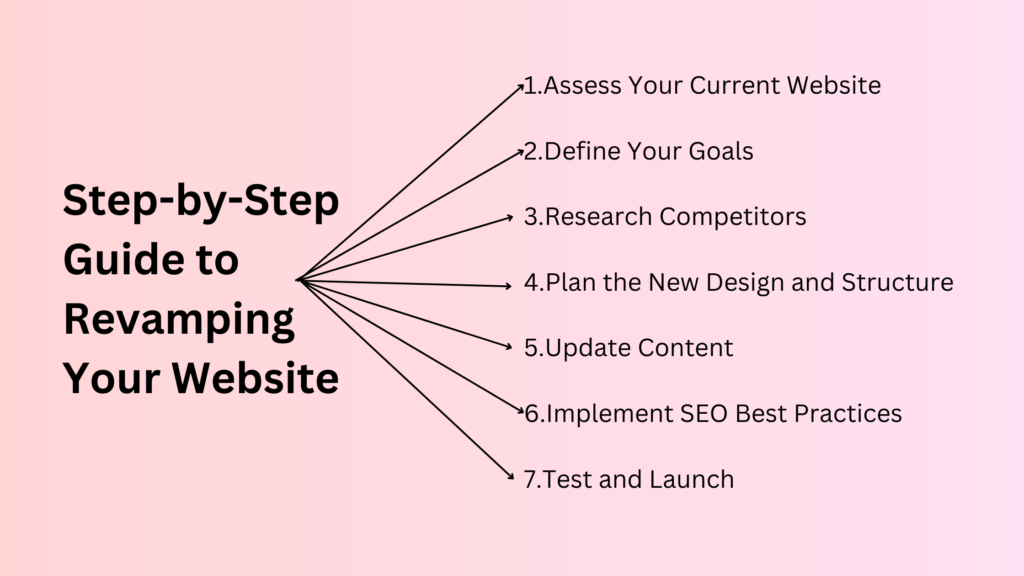In today’s fast-paced digital world, your website is often the first point of contact between your business and potential customers. Yet many businesses make the critical mistake of neglecting their online presence. This article explores why you should never ignore website revamping and how it can significantly impact your business success. From enhancing user experience to boosting SEO performance, we’ll delve into the crucial reasons for keeping your website up-to-date and provide a step-by-step guide to help you through the revamping process.
Understanding the Importance of Website Revamping
Keeping Up with Design Trends
The digital landscape is constantly evolving, and design trends change rapidly. A website that looked modern five years ago might now appear outdated. Current design trends not only impact aesthetics but also user experience. By revamping your website, you can:
- Adopt modern visual elements
- Improve user interface
- Enhance overall user engagement
Enhancing User Experience
User experience (UX) is at the heart of any successful website. Poor navigation, slow loading times, and non-responsive design can frustrate users, leading to high bounce rates. Here’s why you should never ignore website revamping when it comes to UX:
- It allows you to address usability issues
- Ensures a seamless experience across devices
- Improves user engagement and conversion rates
Boosting SEO Performance
Search engines like Google continuously update their algorithms to provide the best possible results to users. An outdated website may not comply with the latest SEO best practices, leading to lower search rankings. Website revamping helps you:
- Integrate the latest SEO techniques
- Improve mobile optimization
- Enhance site speed and performance
Mobile Optimization
With the increasing use of smartphones, having a mobile-optimized website is no longer optional. A significant portion of web traffic comes from mobile devices. Why you should never ignore website revamping for mobile:
- Ensures responsiveness across all devices
- Improves mobile user experience
- Boosts mobile search rankings
Integrating Advanced Features
As technology advances, so do the features available for websites. Modern websites leverage a variety of tools to engage users and streamline operations. Revamping allows you to:
- Implement chatbots for customer service
- Add interactive elements for engagement
- Integrate e-commerce capabilities
The Cost of Ignoring Website Revamping
Ignoring website revamping can have serious consequences:
- Losing Competitive Edge: An outdated website can make your business appear out of touch and less trustworthy.
- Declining Search Rankings: Search engines prioritize websites that offer the best user experience and relevant content.
- Poor User Retention: First impressions matter. Visitors are unlikely to return to an outdated or hard-to-navigate site.
- Security Risks: Outdated websites are more vulnerable to cyber-attacks and breaches.
Step-by-Step Guide to Revamping Your Website
- Assess Your Current Website
- Define Your Goals
- Research Competitors
- Plan the New Design and Structure
- Update Content
- Implement SEO Best Practices
- Test and Launch
Step 1: Assess Your Current Website
Before starting the revamp, understand what’s working and what’s not. Conduct a thorough website audit to identify strengths, weaknesses, and areas for improvement. Use tools like Google Analytics for insights into your site’s performance and user behavior.
Step 2: Define Your Goals
Set clear, SMART goals for your website revamp:
- Specific
- Measurable
- Achievable
- Relevant
- Time-bound
Step 3: Research Competitors
Analyzing your competitors’ websites can provide valuable insights and inspiration. Look at their design, content, features, and user experience. Identify what they are doing well and consider how you can implement similar strategies in your own website revamp.
Step 4: Plan the New Design and Structure
Based on your goals and research, plan the new design and structure of your website. Focus on creating an intuitive navigation system, a visually appealing layout, and a responsive design. Consider hiring a professional web designer if needed to ensure a polished and effective result.
Step 5: Update Content
Content is a key component of any website. Ensure that your content is up-to-date, relevant, and engaging. This includes text, images, videos, and any other media. Implement a content strategy that aligns with your business goals and SEO practices.
Step 6: Implement SEO Best Practices
During the revamp, it’s crucial to incorporate the latest SEO best practices. This includes optimizing meta tags, improving site speed, ensuring mobile-friendliness, and using keywords strategically. Regularly updating your content and adding a blog can also boost your SEO performance.
Step 7: Test and Launch
Before launching the revamped website, conduct thorough testing to ensure everything works as intended. Test on different devices and browsers to identify any issues. Once you’re confident everything is in place, launch your new website and monitor its performance closely.
Conclusion
Why you should never ignore website revamping is clear: it’s essential for maintaining a competitive edge, improving user experience, and driving business growth. From enhancing SEO performance to ensuring mobile responsiveness, the benefits of regular website updates are numerous and significant. By following the step-by-step guide provided, you can ensure a successful website revamp that aligns with current trends and best practices. Don’t let an outdated website hold your business back – start planning your revamp today and reap the rewards of a modern, effective online presence. Check out our affordable SEO services.




